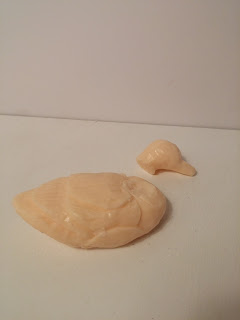For this project, I was to select two architectural time periods and then merge/combine/adapt the elements and principles of each style to create a relief sculpture so it could clearly be seen that I was inspired by the time periods chosen.
We were only to use the certain materials listed below:
- White foam board (any thickness). Can also use black.*
- White paper (came in your kit). Can also use black paper.*
- Balsa wood*
- Clear packing tape OR Elmers Wood Glue OR Tracing Paper.*
- Mask tape*
- White thread/string. Can also use black or gray.*
- Straight pins (with a flat head) for construction.
- Box cutter/utility knife (must use to cut foam core and balsa).
- Can use glue as long as it does not show. Use the Elmers Wood Glue.
- Can use black ink or pen for mark making or to tint paper and/or wood.
The two time periods chosen were Byzantine and Egyptian.
Below are final and in process photos of the whole project.




















































